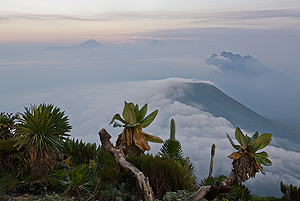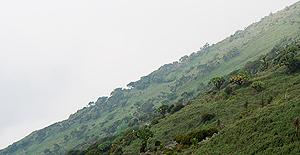Project Leaders:
Christian Brochmann, NCB and Sileshi Nemomissa (South Coordinator), Department of Biology, Addis Ababa University, Addis Ababa, Ethiopia.
Collaborators:
Gerald Eilu, Department of Forest Biology and Ecosystems Management, Makerere University, Kampala, Uganda.
Eric Knox, Department of Biology, Indiana University, Bloomington, USA.
Peter Linder, Institute for Systematic Botany, University of Zürich, Switzerland.
Vincent Muwanika, Institute of Environment and Natural Resources, Makerere University, Kampala, Uganda.
Geoffrey Mwchala, East African Herbarium, Nairobi, Kenya.
Munishi Pantaleo, Department of Forest Biology, Sokoine Agricultural University, Morogoro, Tanzania.
Jan Suda, Department of Botany, Charles University, Prague, Czech Republic.
Pierre Taberlet, Laboratoire d'Ecologie Alpine (LECA), Université Joseph Fourier, Grenoble, France.

|

|

|

|

|

|
People involved from the NCB:
Christian Brochmann
Virginia Mirré
Manuel Pimentel
Rosalia Piñeiro
Magnus Popp
Abel Gizaw
Catherine Masao
Felly Mugizi
Tigist Wondimu
Funded by:
The Norwegian Programme for Development, Research and Education (NUFU)
Description of the project:
Intraspecific genetic diversity is important for how species respond to environmental changes, both in a short-term (adaptive capacity) and a long-term (evolutionary potential) perspective. Quantification of genetic diversity, however, is expensive and time consuming. The intraspecific genetic diversity is therefore often a neglected factor in biological conservation strategies.
Theoretical studies have proposed a link between the processes and concepts underlying taxonomic diversity and genetic diversity. For example, we expect both higher taxonomic diversity and higher intraspecific genetic diversity in refugia, and in contact zones between different habitat types compared to adjacent areas.
In the AFROALP II project, we compare the taxonomic and intraspecific genetic diversity of vascular plants in the Afro-alpine ecosystem in eastern Africa.
The isolated high mountains and high plateaus are important for water supply and agriculture in large parts of eastern and northern Africa, and the flora and fauna have been affected by dramatic tectonic events, volcanism and repeated climate changes.
Today, human activity is a key component of environmental change. These isolated mountains may be regarded as temperate islands in a tropical surrounding "ocean" and are often described as "sky islands" (pictured right). The climate in the Afro-alpine ecosystem is characterized by sharp daily fluctuations in temperature, often with night temperatures below 0°C.
Field work has been carried out in the eleven highest mountain systems in Ethiopia, Kenya, Tanzania, and Uganda. By studying the taxonomic and intraspecific genetic diversity in different habitat types, such as grasslands, bogs, rocky outcrops, Alchemilla communities and Dendrosenecio forests (see pictures right) in the mountains we can make comparisons at different spatial scales.
The main objective of the AFROALP II project is to assess whether, to what degree, and on which spatial scales diversity at the species level is correlated with genetic diversity at the intraspecific level. The data used to estimate intraspecific diversity will also be used to infer response to Pleistocene climate changes based on comparative phylogeographic analysis.
This will enable better predictions of the response to human-induced climate change. In addition, we are building up a DNA barcoding database for the entire Afro-alpine flora (~300-350 species) and extensive collections, used to establish and develop local DNAbanks in each of the four African countries as part of their museum collections. The species diversity and genetic diversity data will be used to identify hotspots of high priority for conservation of the afro-alpine ecosystem, and to provide conservation strategies and guidelines.
Subprojects:
Four PhD students are involved in the project. In addition to contributing to the main goals of the project, each student is carrying out a more detailed study on particular plant groups: Dendrosenecio (Felly Mugizi), Lobelia (Catherine Masao), Lychnis (Abel Gizaw), and Swertia (Tigist Wondimu).
The phylogeographic study is led by Rosalia Piñeiro, and Manuel Pimentel is responsible for the DNA barcoding database.